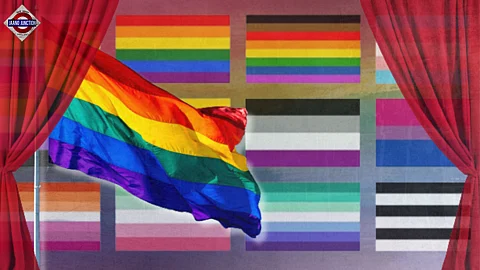

In recent decades, the rainbow flag has become an iconic symbol of LGBTQ+ pride and solidarity. However, the LGBTQ+ community's symbols and representations extend far beyond the colorful stripes of the flag. From historical emblems to contemporary symbols of inclusivity, the diverse range of pride symbols reflects the rich tapestry of identities and experiences within the community. Let's embark on a journey to explore the symbolism and evolution of pride symbols, delving into the significance they hold for LGBTQ+ individuals and their allies.
1. The Rainbow Flag: A Timeless Symbol of Pride and Unity:
The rainbow flag, designed by Gilbert Baker in 1978, has become synonymous with LGBTQ+ pride. Each color of the flag holds meaning, representing various aspects of the community. Red symbolizes life, orange is for healing, yellow represents sunlight, green signifies nature, blue represents harmony, and violet represents spirit. The flag's enduring popularity stems from its ability to unite people under a shared banner of inclusivity, diversity, and acceptance.
2. Pink Triangle: A Symbol of Resilience and Remembrance:
The pink triangle, originally used as a symbol of persecution during the Holocaust, was reclaimed by the LGBTQ+ community in the 1970s. It serves as a reminder of the struggles faced by queer individuals throughout history and stands as a symbol of resilience, strength, and the fight against oppression. The pink triangle's transformation from a symbol of persecution to a symbol of pride is a testament to the community's spirit of triumph and determination.
3. Transgender Symbols: Embracing Identity and Visibility:
The transgender pride flag, designed by Monica Helms in 1999, features blue, pink, and white stripes. Blue represents masculinity, pink represents femininity, and the white stripe represents those who are transitioning or who have a non-binary gender identity. Additionally, symbols such as the transgender symbol (a combination of the male and female gender symbols) and the transgender pride butterfly serve as powerful emblems of transgender visibility and recognition.
4. Intersex Symbols: Embracing Diversity and Visibility:
The intersex pride flag, created by Morgan Carpenter in 2013, features yellow and purple circles on a lavender background. Yellow represents variations of sex characteristics, purple symbolizes diversity, and the lavender background represents individuals who are intersex. These symbols work to raise awareness, promote acceptance, and emphasize the importance of understanding the complexities of sex and gender.
5. Progress Pride Flag: Expanding Inclusivity and Intersectionality:
The Progress Pride Flag, designed by Daniel Quasar in 2018, incorporates the traditional rainbow flag with additional elements. It includes black and brown stripes to represent marginalized LGBTQ+ communities of color, as well as pink, light blue, and white stripes to represent transgender and non-binary individuals. This flag emphasizes the importance of intersectionality and the ongoing journey towards inclusivity and equality.
6. Other Pride Symbols: Tailoring Expression and Visibility:
Various other pride symbols have emerged to represent specific LGBTQ+ identities and experiences. Examples include the lesbian pride flag, bisexual pride flag, pansexual pride flag, and asexual pride flag, among others. These symbols not only foster a sense of belonging within specific communities but also contribute to broader awareness and acceptance of diverse sexual orientations and gender identities.
Beyond the iconic rainbow flag, the world of LGBTQ+ pride symbols is a vibrant tapestry that reflects the diverse identities, experiences, and struggles within the community. Each symbol carries profound meaning, representing resilience, visibility, remembrance, and the ongoing fight for equality. As society evolves, so too do the pride symbols, adapting to embrace intersectionality and promote inclusivity. Understanding and appreciating the symbolism and evolution of these emblems fosters a deeper connection and empathy for the LGBTQ+ community. Let us continue to celebrate and uplift these symbols of pride, recognizing their power in fostering acceptance, love, and unity for all.
